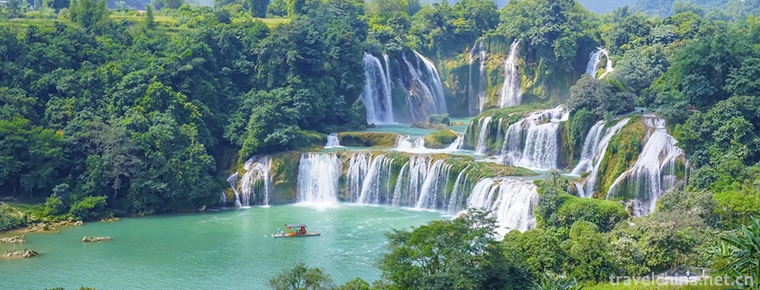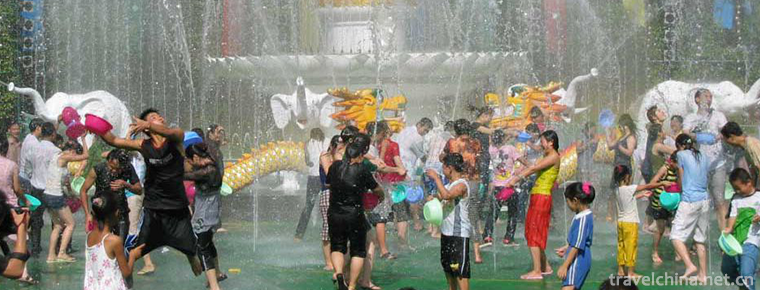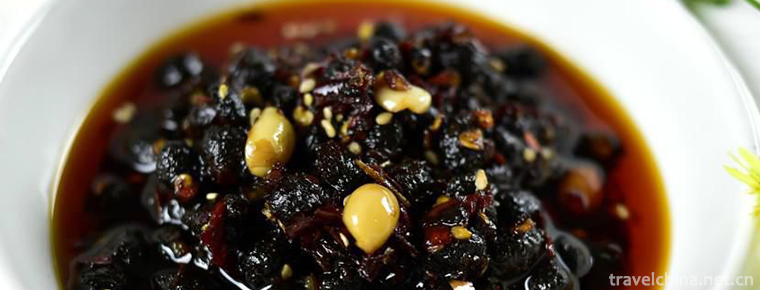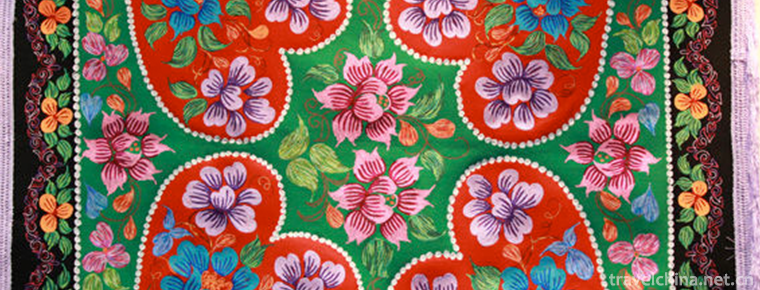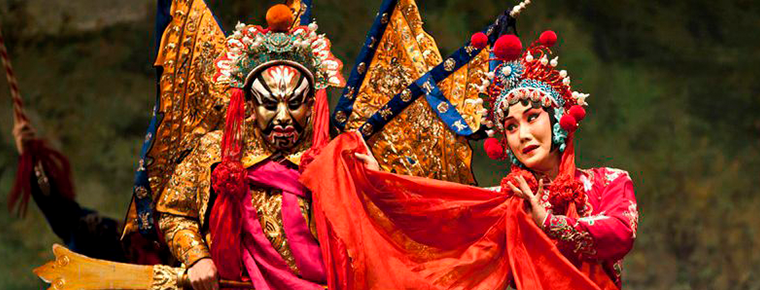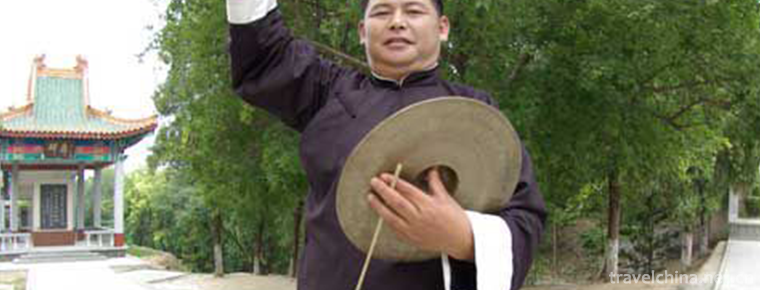Little wild goose pagoda
Little wild goose pagoda
Xiaoyan Pagoda is located in the Jianfu Temple of Anrenfang, Chang'an City, Tang Dynasty (now the southern suburb of Xi'an City, Shaanxi Province), also known as the "Jianfu Temple Pagoda". It was built in the reign of Jinglong in Tang Dynasty. It is an important symbol of Chang'an City of Tang Dynasty. The small goose pagoda is a typical work of the early square eaves brick Pagoda in China. It has 15 stories, 13 stories, 43.4 meters high and beautiful pagoda shape. It is the artistic heritage of Buddhist architecture in Tang Dynasty. Buddhism was introduced into the Central Plains and integrated into the Han culture.
The ancient bells in Xiaoyan Pagoda and Jianfu Temple Bell Tower are called "Yanta Morning Bell", which is one of the eight scenic spots in Guanzhong. It is a part of Xi'an Museum and a national AAAA-level tourist attraction.
On March 4, 1961, the Little Wild Goose Pagoda was announced by the State Council as the first batch of national key cultural relics protection units . On June 22, 2014, at the 38th session of UNESCO World Heritage Committee held in Doha, Qatar, the Little Wild Goose Pagoda was successfully included in the World Heritage List as a site of the Silk Road: Road Network of Chang'an-Tianshan Corridor, which was jointly applied for by China, Kazakhstan and Kyrgyzstan.
Historical evolution
Orion of the Name
The Small Goose Pagoda and the big goose pagoda face east and west, which are two important landmarks preserved by the security of the Tang Dynasty's capital master. Xiaoyan Pagoda was always called "Jianfu Temple Pagoda" in Tang and Song Dynasties. The name of "Xiaoyan Pagoda" was related to "Big Wild Goose Pagoda".
Tang Gaozong Yonghui three years (652), the court funded the construction of a Buddhist pagoda, named Yan Pagoda, which was used to resettle Xuanzang's Buddhist scriptures brought back from India, at the West Temple of Cien Temple in Chang'an. In the first year of Jinglong in the middle of Tang Dynasty (707), a small Buddhist pagoda was built under the auspices of the famous Taoshore lawyer, who was funded by palaces in the palace. Later, in order to distinguish the two pagodas, the Cien Temple Pagoda was named "Big Wild Goose Pagoda", while the Jianfu Temple Pagoda was smaller than the Big Wild Goose Pagoda in shape, so the name "Little Wild Goose Pagoda" has been circulating until now.
Architectural history
The Little Wild Goose Pagoda was built during the reign of Jinglong (707-710) in the middle Tang Dynasty to store Buddhist scriptures and Buddhist paintings brought back from Tianzhu by Yijing, a prominent monk in the Tang Dynasty. The pagoda of Xiaoyan Pagoda is a part of the Jianfu Temple, but the pagoda is not in the Jianfu Temple at that time, but opposite to the temple gate. The pagoda is located in Anrenfang, across the street from the gate of Jianfu Temple in Kaihua Fang. During the war in the late Tang Dynasty, the Jianfu Temple was destroyed and destroyed repeatedly. Only the Little Wild Goose Pagoda was preserved.
Documents from the reign of Song Zhe Zong and Yuan You (1086-1094) recorded that the Jianfu Temple had moved from Kaihua Square to the pagoda courtyard of Anren Square at that time, and became a whole with Xiaoyan Pagoda. In 1116, a believer who claimed to be a "tortuous valley" vowed to repair the Little Wild Goose Pagoda, repairing the severely weathered eaves and corners of the pagoda, and decorating it with white clay. Up to now, the pagoda has been painted with white clay.
During the Ming and Qing dynasties, the Jianfu Temple and Xiaoyan Pagoda were repaired many times. There were five large-scale renovations in the Ming Dynasty, basically preserving the previous pattern. In the first year of Xuande in Xuanzong of Ming Dynasty (1426), the monk of Hongjue Temple in Xining, Shaanxi Province, Diu Sijimengqin Xiduhu, went to the Jianfu Temple to sit down. When he saw that the temple was abandoned, he vowed to rebuild it. After the completion of the Ming Ying orthodox fourteen-year (1449) overhaul, he begged the court for the name of the temple. The plaque of "Rongzhi Jianfu Temple" is the imperial pen of Ming Yingzong. At the end of the Chenghua reign of the Ming Xianzong (1487), an earthquake occurred in Xi'an and the body of the Xiaoyan Pagoda was shattered. Later, when the tower was rebuilt, a layer of bricks was laid at the bottom of the tower, but no cracks in the tower body were repaired (cracks in earthquake cracks were repaired only after a renovation in 1965). The Xiaoyan Pagoda had 15 stories. In the 34th year of Jiajing reign of Emperor Zong of Ming Dynasty (1556), the top two stories of the pagoda were destroyed by the earthquake in Huaxian County. There are 13 stories left.
In the Qing Dynasty, Jianfu Temple was renovated many times, with the largest renovation scale in the 31st year of Kangxi (1692). In the late Qing Dynasty, the Tibetan Sutra Building and Nanshanmen were also built.
After the 1911 Revolution, from 1926 to May 1949, the Jianfu Temple was occupied by the army for a long time. The Little Wild Goose Pagoda also served as a military command post. After the Kuomintang troops evacuated from Xi'an, the palace of the Little Wild Goose Pagoda was filled with rubbish.
Protection of cultural relics
After 1958, the cultural relics department took over the Jianfu Temple and began the restoration of the Jianfu Temple and the Xiaoyan Pagoda.
On March 4, 1961, Xiaoyan Pagoda, as an ancient building in Tang Dynasty, was listed in the first batch of national key cultural relics protection units by the State Council.
In 1963, the Little Wild Goose Pagoda Preservation Office was established.
In 1965, the Xi'an Civil Administration Association carried out a comprehensive survey and renovation of the Xiaoyan Pagoda, restored the base of the tower, renovated the North-South coupon holes and cracks in the tower body, strengthened the eaves and angles of the tower, added wooden floors and stairs, and treated the top and drainage of the tower.
In 1980, the Xiaoyan Pagoda Cultural Relics Reserve was officially opened to the outside world.
In 1992, the Shaanxi Provincial People's Government issued the protection scope and construction control zone of the Little Wild Goose Pagoda.
In 2006, Xiaoyan Pagoda was listed in the Preparatory List of World Cultural Heritage Applications by the State Administration of Cultural Relics.
In 2007, the protection organization of Xiaoyan Pagoda was changed to Xi'an Museum. After its completion, the Xi'an Museum officially opened to the outside world, including cultural relics exhibition hall, historic scenic spots and Garden Tourist areas. The Little Wild Goose Pagoda became a part of the museum.
On September 25, 2011, an International Symposium on "Small Goose Pagoda Earthquake Resistance and Protection" was held in Xi'an, jointly organized by Xi'an Museum, Xi'an Urban Heritage Conservation Research Center and International Council for Ancient Sites (ICOMOS) Xi'an Conservation Center. More than 80 experts and leaders of cultural relics institutions from Belgium, Slovenia, Japan and China participated in the conference.
In 2012, the Xi'an Museum completed the archaeological exploration of the protected area of the Xiaoyan Pagoda with a total exploration area of 800 square meters.
On the morning of March 27, 2013, the Xi'an Museum organized and held the "Examination and Approval of the Outline of the Silk Road Exhibition of the Little Wild Goose Pagoda". Participants initially determined the content and structure of the exhibition outline, and designated the title of the exhibition as "Silk Road Pearl Little Wild Goose Pagoda". This exhibition is a special exhibition to cooperate with the joint declaration of world cultural heritage of Xiaoyan Pagoda. This examination and approval will be a comprehensive and in-depth discussion on the exhibition outline of Xiaoyan Pagoda Silk Road Heritage Application after the "Assessment Meeting on the Exhibition Outline of Xiaoyan Pagoda Silk Road" on January 16, 2013.
On April 02, 2013, the State Administration of Cultural Relics approved the "Request for the Project Plan for the Application of the Little Wild Goose Pagoda" (Shaanxi Cultural Relics Word No. 22, 2013), and agreed in principle to the proposed scheme.
On October 13, 2013, the application project of Xiaoyan Pagoda was accepted by experts of the International Council of Monuments and Sites.
In May 2014, the project of Xiaoyan Pagoda was appraised by the Expert Group of the International Council of Monuments and Sites.
On June 22, 2014, at the 38th session of UNESCO World Heritage Committee held in Doha, Qatar, the Little Wild Goose Pagoda was successfully included in the World Heritage List as a site of the Silk Road: Road Network of Chang'an-Tianshan Corridor, which was jointly applied for by China, Kazakhstan and Kyrgyzstan.
On April 18, 2015, the 50th anniversary of the International Council on Monuments and Sites (ICOMOS) was founded. The theme of the International Day of Monuments and Sites on April 18 was "Commemorating the 50th anniversary of the International Council on Monuments and Sites", calling on countries to carry out colorful activities to publicize the concept and contribution of ICOMOS in the protection of International Cultural Heritage sites. As the business center of ICOMOS in Xi'an, IICC-X has actively responded to the call of ICOMOS and carried out a series of activities on cultural heritage protection and propaganda in Dayan Pagoda, Xiaoyan Pagoda and Dahua Yarn Mill around the theme of "commemorating the 50th anniversary of the establishment of ICOMOS".
On April 29, 2015, the State Administration of Cultural Relics approved the "Request for the Establishment of Renovation Projects for the Cishi Pavilion of the Little Goose Pagoda" (Shaanxi Cultural Relics Word No. 18 ), and agreed to the establishment of Renovation Projects for the Cishi Pavilion of the Little Goose Pavilion.
Tourism information
Address:
Xi'an Friendship West Road, Xi'an Museum, Shaanxi Province
Opening Hours:
9:00-16:00 (closed every Tuesday)
Admission ticket:
Free (3,000 individual visitors per day, including the ancient buildings of Jianfu Temple and Xi'an Museum)
Transportation:
18, 203, 204, 218, 21, 224, 29, 32, 407, 40, 410, 46, 508, 521, 700, 707, 713, 720, swim 7, swim 8
Pictures From: http://bbs.fengniao.com/forum/10653807.html
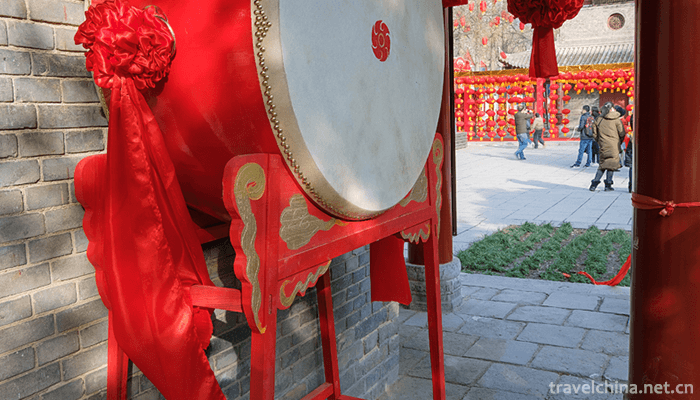

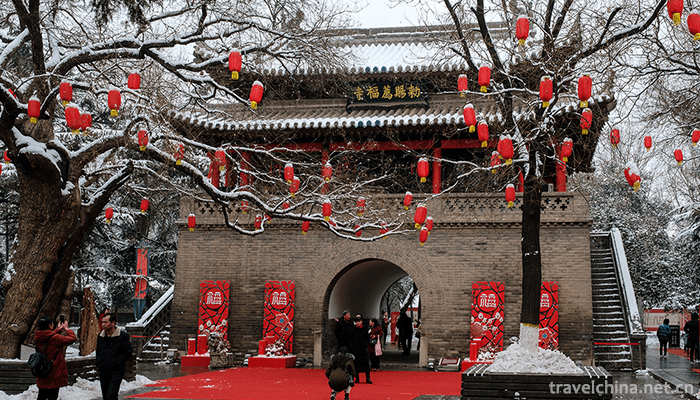
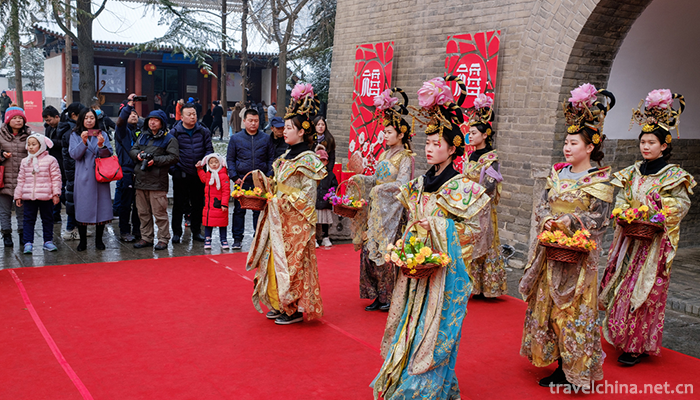
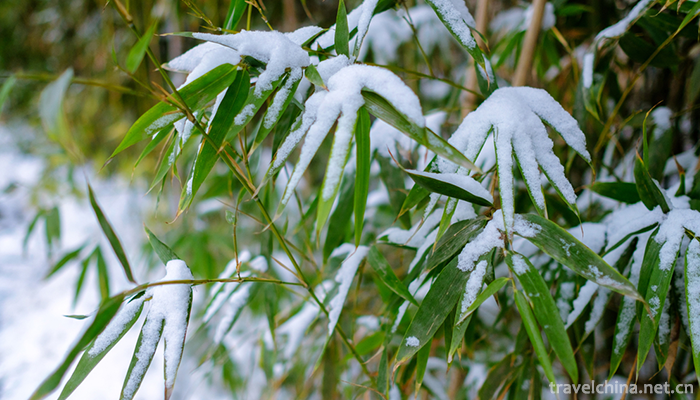
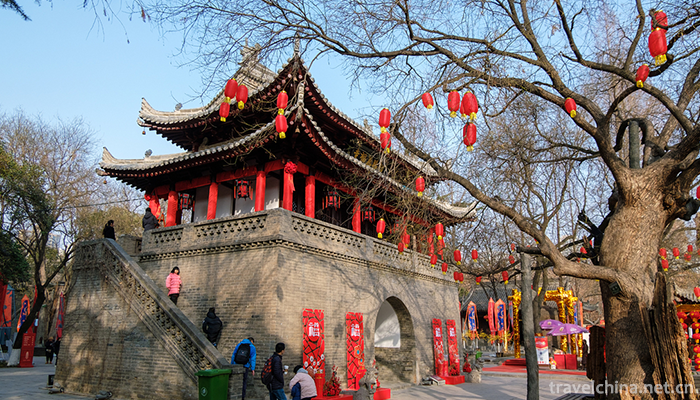
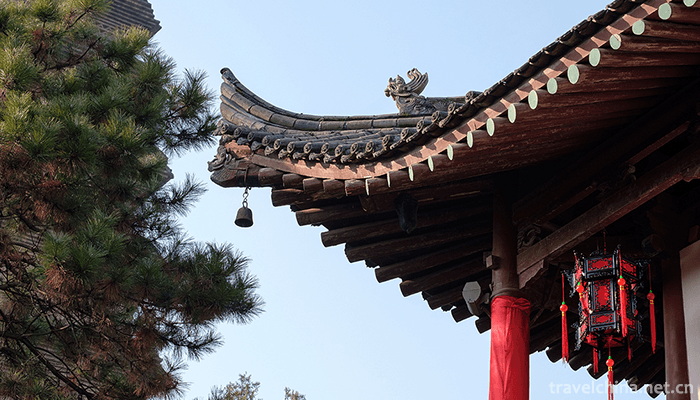
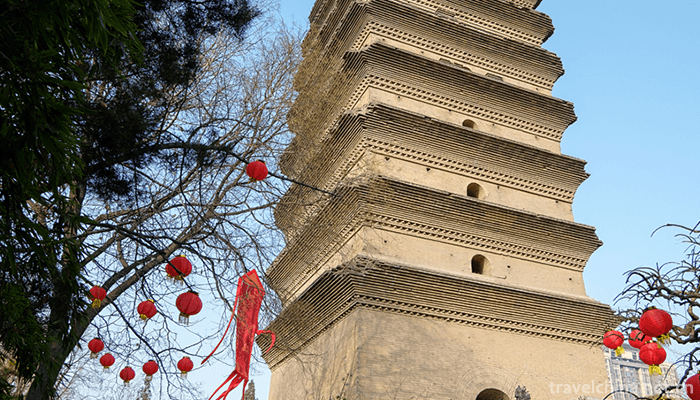
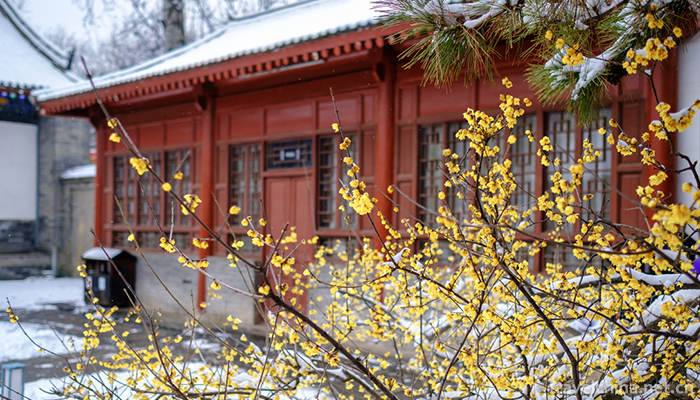
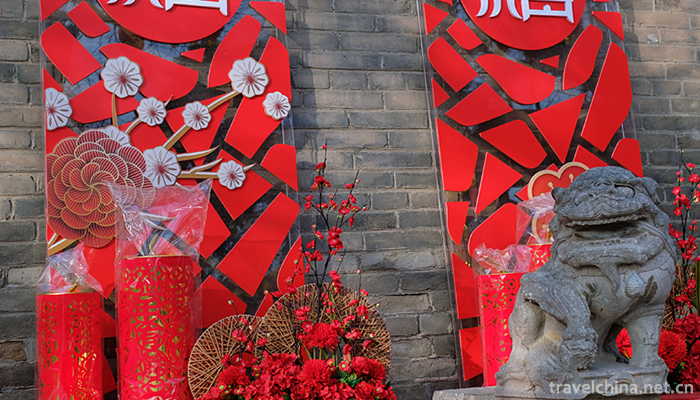
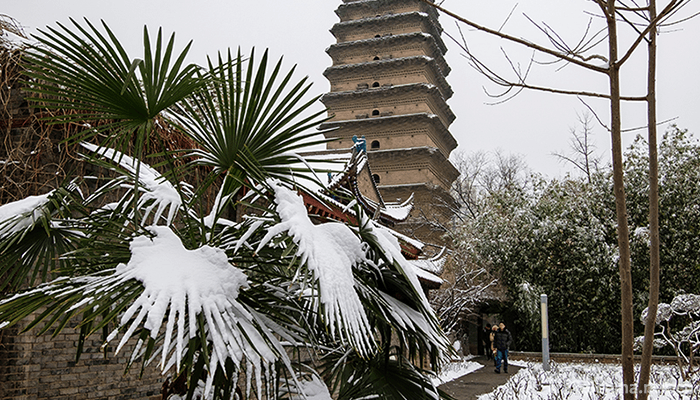
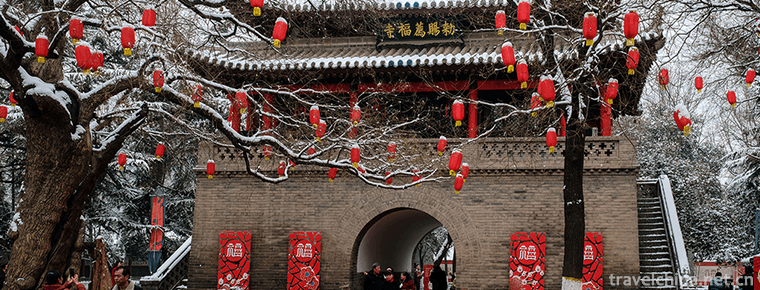
Little wild goose pagoda
-
Qinghai Lake
In Qinghai Lake, the Tibetan language is called "the weming cloth"
Views: 274 Time 2018-10-23 -
Detian waterfall
Detian Waterfall is located in Detian Village, Shuolong Town, Daxin County, Chongzuo City, Guangxi Zhuang Autonomous Region. It is located in the upper reaches of Guichun River on the border between C
Views: 179 Time 2018-12-12 -
Dongchang Lake Scenic Area
Dongchang Lake Scenic Spot, located in the southwest of Liaocheng City, a famous national historical and cultural city, belongs to Dongchangfu District and is a national AAAA-level tourist scenic spot
Views: 160 Time 2018-12-20 -
Guilin Yaoshan Scenic Area
Yaoshan is located in the eastern suburb of Guilin City, 8 kilometers away from the city center. The main peak is 909.3 meters above sea level and 760 meters above sea level. It is the highest peak in
Views: 174 Time 2019-01-13 -
Qingyan Ancient Town
Qingyan Ancient Town, one of the four ancient towns in Guizhou, is located in the southern suburb of Guiyang City. It was built in Hongwu ten years (1378) of Ming Dynasty
Views: 183 Time 2019-02-07 -
March Street Dali
"Yuejie", or March Street of Dali, also known as "Guanyin City, also known as the March Meeting of Dali, today also known as the National Day of March Street, is a grand festival and st
Views: 217 Time 2019-04-23 -
Water splashing Festival
Dai Water-Splashing Festival is also called "Bath Buddha Festival". Dai language is called "Sangkangbimai" (meaning "New Year"). Dai people in Xishuangbanna Dai Autonomou
Views: 437 Time 2019-04-24 -
Brewing Techniques of Douchi
Douchi brewing has a long history in China, and the records of Douchi production appeared in Qimin Yaoshu during the Northern and Southern Dynasties. Douchi is a kind of healthy food
Views: 166 Time 2019-04-28 -
Kazakh felt embroidery and cloth embroidery
Kazakh folk traditional felt embroidery and cloth embroidery handicraft are mainly spread in Xinjiang Kazakh soft residential areas, such as the Sixth Division Red Banner Farm
Views: 364 Time 2019-05-02 -
Beijing opera Peking Opera
Peking Opera, once known as Peking Opera, is one of the five major Chinese operas. The setting lays stress on freehand brushwork. The tone is mainly Xipi and Erhuang
Views: 225 Time 2019-05-07 -
Laozi Shandong Province
Shandong Laozi is a traditional opera art form which spreads in Shandong Province. It evolved from the ancient "lotus flower falls". Laozi instruments are mainly cymbals (commonly known as G
Views: 173 Time 2019-06-13 -
Modern cheongsam
At the beginning of the 20th century, it was popular to wear a short jacket with trumpet shaped wide sleeves inside, and a long waistcoat without sleeves with the front and back of the coat reaching the ground. Since then, cheongsam has made some changes in the edge, sleeve
Views: 131 Time 2020-12-11

